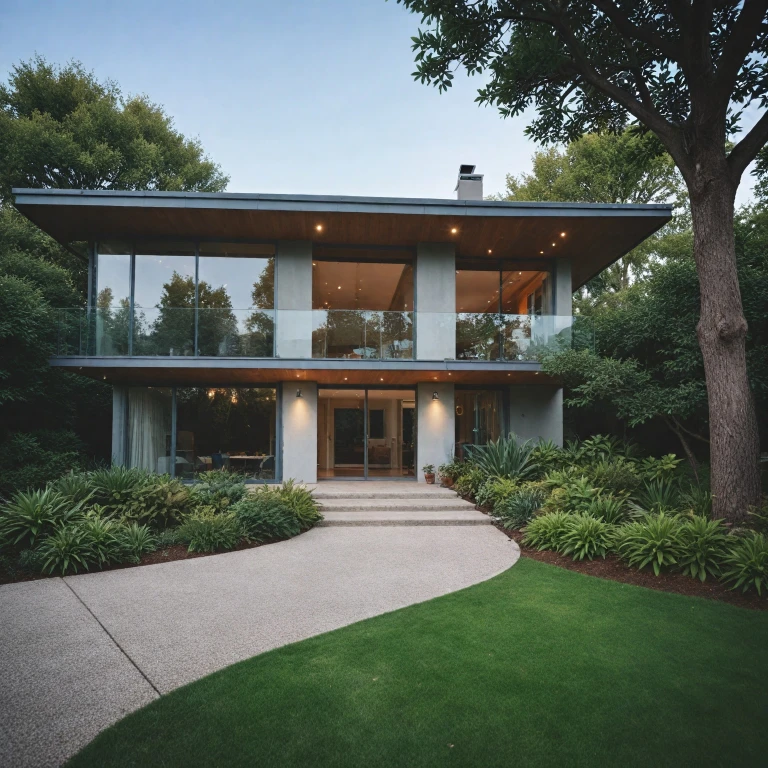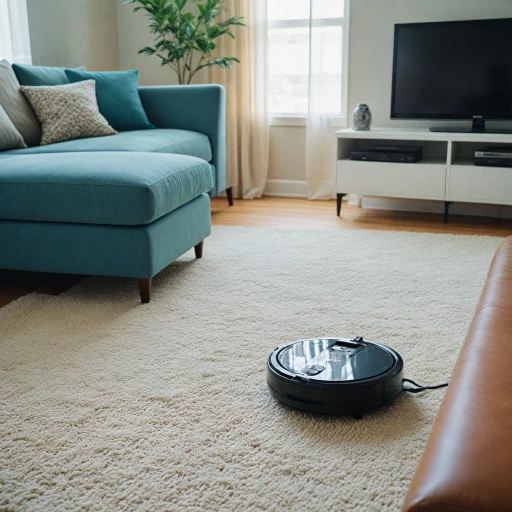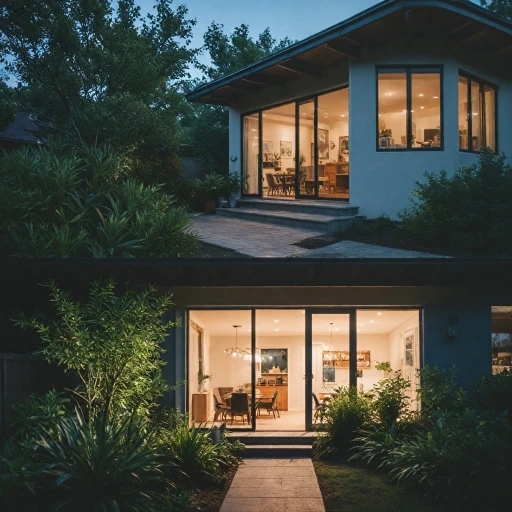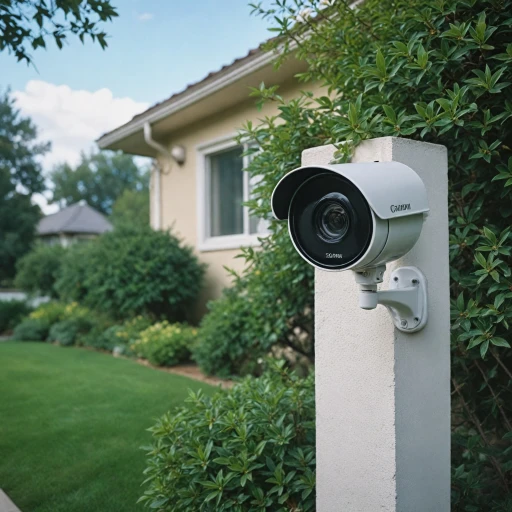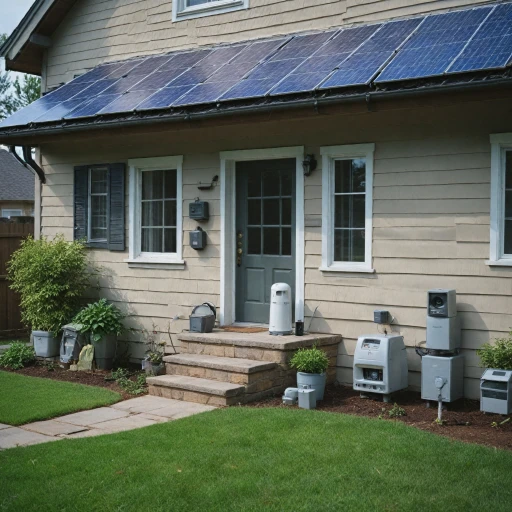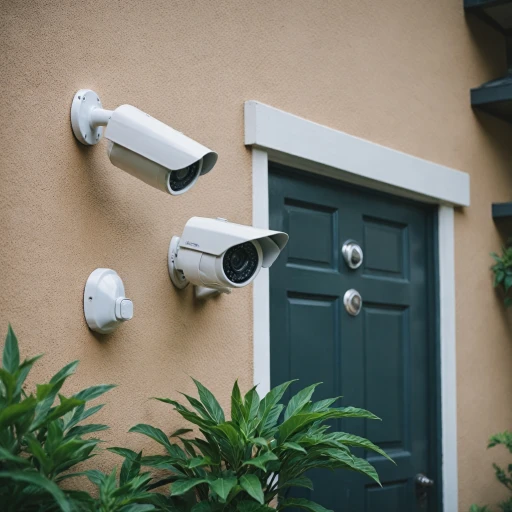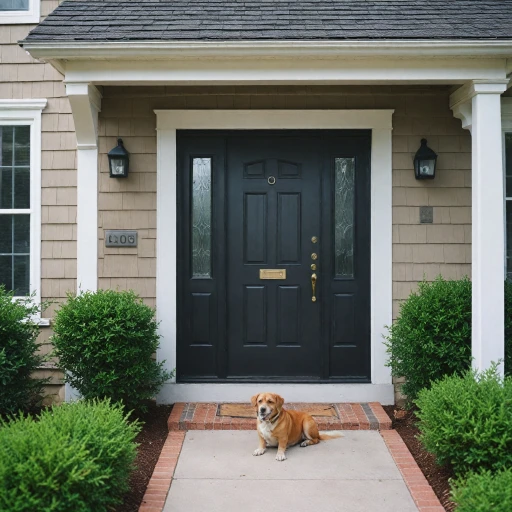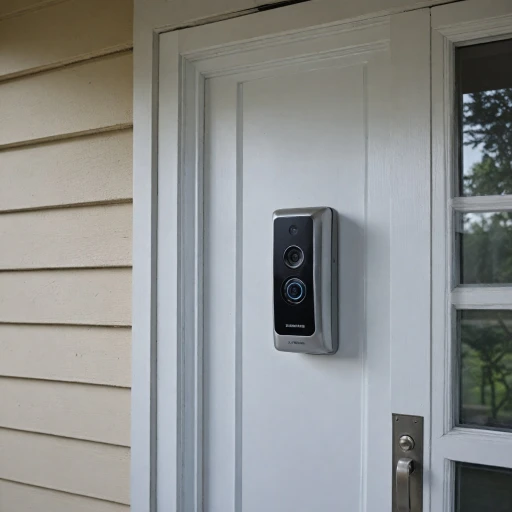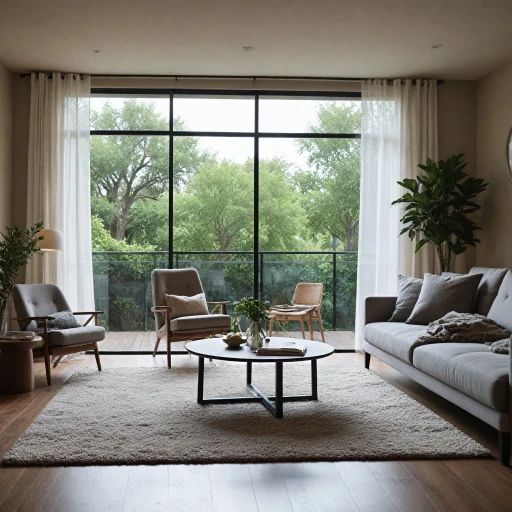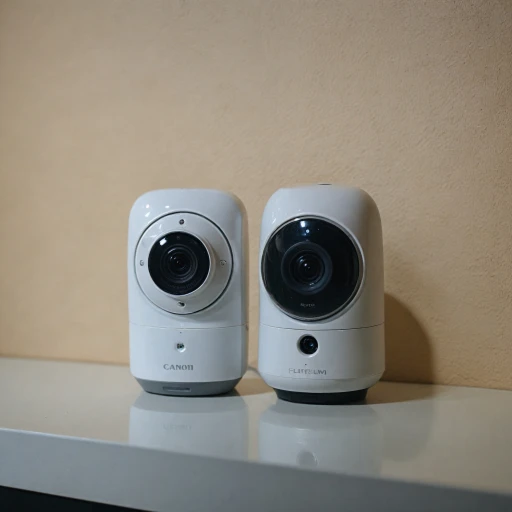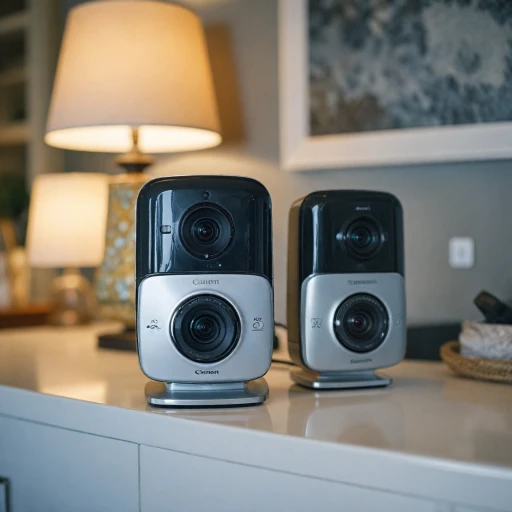
Understanding the Basics of Home Security Cameras
Grasping the Essentials of Security Cameras
When it comes to safeguarding your home, understanding the basics of home security cameras is crucial. These devices have become a cornerstone of modern security systems, offering a range of features and functionalities that cater to different needs and preferences.
Security cameras vary in their offerings, with companies like ADT, SimpliSafe, and Ring leading the industry in delivering diverse options. From the simplicity of diy installation systems to those requiring professional security services, there is a solution suitable for every household.
Smart security cameras are advancing rapidly, integrating with smart home systems to offer seamless control via apps and voice commands through devices such as Alexa and Google Assistant. This integration not only elevates house security but also enhances convenience for homeowners.
When choosing the best security camera for your needs, consider options that come with features like motion sensors, monitoring services, and the flexibility of no-contract terms. Contract-free options are increasingly popular, allowing users more freedom and control without long-term commitments.
The effectiveness of smart security systems largely depends on choosing the right combination of services and systems. With the rise of app-based monitoring and professional installation services, maintaining a vigilant eye on your property is now more accessible and user-friendly than ever before.
Choosing the Right Security Camera for Your Home
Factors to Consider When Selecting Your Ideal Security Camera
Choosing the right security camera for your home is crucial in enhancing your house security. With a myriad of options available from companies like ADT, Ring, and SimpliSafe, it's essential to identify the features most beneficial for your security needs.
Assessing Your Security Requirements
Begin by evaluating the level of security required for your home. Consider the size and layout of your property, potential entry points, and areas requiring monitoring. Some homeowners may require comprehensive systems with numerous sensors, while others may find a few strategically placed cameras sufficient.
Wired vs. Wireless Systems
Decide between wired and wireless systems. Wireless options typically offer easier DIY installation and integration with smart devices like Alexa or Google. Wired systems might require professional installation but can offer more reliable connections without the concern of battery life.
Features to Look For
- Resolution: Ensure the camera provides clear images with high resolution for better facial and detail recognition.
- Field of View: Wide-angle lenses cover larger areas, reducing the number of cameras needed.
- Night Vision: Crucial for maintaining security at night or in low-light conditions.
- Two-Way Audio: Allows interaction with anyone at your front door or in your home remotely.
- Smart Integration: Compatibility with apps and smart assistants for easy monitoring and control.
- Professional Monitoring: Many services offer subscriptions for professional monitoring, adding an extra layer of security.
Budget and Contract Considerations
Your budget will also dictate your choice. While some systems, like DIY installation kits, may be cheaper, others could require contract security services with fees for professional monitoring. Compare available options and choose the one that balances value and functionality effectively.
Installation Tips for Optimal Coverage
Maximize Your Camera’s Effectiveness with Proper Placement
Setting up your home security camera involves more than just plugging it in and mounting it anywhere. Strategic placement can significantly enhance its effectiveness. Ideally, you want to position cameras in locations that cover key entry points, such as doors and ground-floor windows. Ensuring angles that capture wide views is critical. Popular systems from ADT or Ring offer flexibility with placement and can be adjusted to suit your home's layout.
Consider Height and Angle
Install cameras high enough to avoid easy tampering or obstacles but low enough to get clear facial images. The ideal height for outdoor cameras is around 8-10 feet off the ground. Cameras should be angled slightly downward to capture more details of the person's features and any potential intruders.
Lighting Conditions Matter
Don't overlook the importance of lighting when it comes to installation. Cameras, particularly those with night vision like those used in SimpliSafe systems, should not face direct light sources to avoid lens flare, but also need sufficient ambient lighting for night clarity.
Balance Coverage and Privacy
While ensuring optimal coverage, consider privacy both for your home and your neighbors. Many smart systems come with customizable settings, allowing you to exclude certain areas from your surveillance scope, thereby addressing privacy concerns effectively.
DIY vs. Professional Services
Many homeowners opt for DIY security camera installation because it’s less expensive and offers more control over settings. However, professional installation from a reputable company ensures optimal coverage and often includes tripods, wall mounts, or camera stands that can enhance stability and positioning. Ring and other systems offer both DIY installation and professional services, letting you choose the most suitable option for your needs. For those looking at a contract-free option, consider a monitoring system that doesn’t require professional monitoring services.
Integrate Smart Devices
Using smart devices like Amazon Alexa or Google Assistant can optimize your system. This allows you to control your home security system with voice commands, enhancing convenience and integration across different devices. For further advice on choosing the right devices and comparing different models, check out our comprehensive guide on comparing Arlo and Eufy.
Integrating Security Cameras with Smart Home Systems
Integrating Smart Security Features in Your Home
In the modern era of smart technology, integrating security cameras with your smart home systems can greatly enhance the level of protection and convenience for your household. This integration can be seamlessly achieved with the help of platforms like Amazon Alexa and Google Home, transforming your security systems into a cohesive unit that aids in efficient monitoring and management. Many homeowners are opting for smart security solutions, such as those offered by ADT or SimpliSafe, known for their professional monitoring and comprehensive security services. These systems often come with smart apps that provide you with instant alerts and the capacity to control your devices remotely. This remote access ensures you can keep an eye on your house from anywhere, at any time. Additionally, integrating security cameras with smart systems allows you to incorporate various sensors, such as those that detect glass break or motion. These sensors add an additional layer of security by triggering alarms or notifications, alerting you to potential security breaches. Smart integration also simplifies system control through voice commands. For instance, you can easily arm or disarm your Ring Alarm system using a simple command to Alexa, enhancing the user experience and providing quick access in emergency situations. Systems that offer professional installation often provide comprehensive setup of these smart features, ensuring compatibility and optimal functionality. However, DIY installation options are also available for homeowners who prefer a hands-on approach. These systems come with user-friendly guidelines to set up your smart devices without the need for a contract. Integrating security cameras with your smart home initiatives not only boosts your house security but also enriches your lifestyle with modern conveniences. Whether it's through a DIY installation or professional services, combining technological advancements with security measures can be your best defense in safeguarding your home.Addressing Privacy Concerns with Home Security Cameras
Balancing Security and Privacy
When it comes to home security cameras, privacy concerns are often top of mind for homeowners. While these devices are essential for enhancing your house security, they can also raise questions about who has access to the footage and how it is used. Understanding the balance between security and privacy is crucial.
Understanding Data Access and Storage
One of the primary concerns with security cameras is data access. Many systems, like those offered by ADT and Ring, store footage in the cloud, which can be convenient but also raises privacy issues. It's important to review the terms of service of your chosen company to understand who can access your data and under what circumstances. Some systems offer local storage options, which can be a more private alternative.
Choosing the Right Features
When selecting a security system, consider features that enhance privacy. For instance, systems with customizable motion sensors and zones allow you to focus on specific areas of your property, minimizing unnecessary recording. Smart security systems often come with apps that let you control these settings remotely, giving you more control over your privacy.
Professional Monitoring vs. DIY Options
Professional monitoring services, such as those provided by SimpliSafe, offer peace of mind but may require access to your camera feeds. If privacy is a concern, you might prefer a DIY installation, which allows you to manage your system without third-party involvement. However, professional installation can ensure optimal coverage and integration with smart devices like Amazon Alexa and Google Assistant.
Legal Considerations and Best Practices
It's also essential to be aware of legal considerations. Laws regarding surveillance vary by location, so ensure your system complies with local regulations. Informing visitors about the presence of cameras can also help address privacy concerns. Additionally, regularly updating your security system and reviewing its settings can help maintain both security and privacy.
In conclusion, while security cameras are a valuable tool for protecting your home, addressing privacy concerns is crucial. By choosing the right features and understanding data access, you can enjoy the benefits of a smart security system without compromising your privacy.
Maintaining and Upgrading Your Security System
Keeping Your Security System in Prime Condition
Maintaining your security cameras and connected systems is essential for ensuring ongoing protection and optimal performance. Regular upkeep and timely upgrades can prevent potential issues and enhance the functionality of your home security setup.
Routine Maintenance
- Visual Inspections: Periodically inspect your cameras for any visible damage or obstruction. Ensure camera angles remain clear and unobstructed by foliage or debris, particularly after storms.
- Firmware Updates: Regularly update the firmware of your security cameras and smart devices. Updates often include critical security patches and performance enhancements from the manufacturer.
- Battery Checks: For systems with battery-operated components, like the Ring alarm or Simplisafe sensors, consistently check battery levels. Replace batteries as needed to prevent lapses in security coverage.
- Testing Equipment: Test your cameras and sensors by simulating situations like opening doors or windows to ensure they trigger the system appropriately.
Upgrading Your Security Setup
- Technology Advancements: Advances in technology, such as better video quality or improved integration with smart systems like Alexa and Google Assistant, may warrant equipment upgrades. Consider reviewing current offerings from reputable companies to ensure your system utilizes the best technology available.
- Professional Monitoring Services: Evaluate the need for professional monitoring services. While DIY installations provide flexibility, professional services add an extra security layer by employing trained security guards to respond to alerts.
- Scalability: As your needs evolve, you may wish to expand your system by adding more cameras or sensors. Ensure your current setup can accommodate additional components seamlessly.
Working with Security Professionals
- Reviews and Comparisons: Evaluate home security systems by reading reviews and comparisons of systems like ADT and others, assessing which aligns best with your needs.
- Contract Considerations: Consider whether you need a flexible DIY setup or a contract with a security company offering comprehensive services. Be mindful of the terms and services covered in any contract security arrangements.
- Regular Assessments: Schedule assessments with security experts to review and potentially upgrade your system as necessary, ensuring continuous protection of your house.

